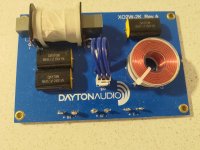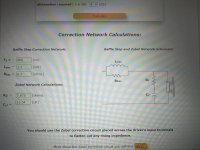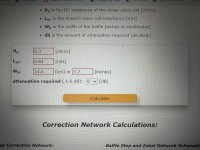Great find Geoff!I have a spare pair of RS180P-8s, I’ve thought of doing a two way but don’t need more speakers at the moment. Look up Wogg Music’s website, where his Super Nova Minimus design matches the RS180 with a Vifa tweeter echos available from Wagner in Oz, about $65 ea. Doing this on phone so can’t send the link, sorry
Geoff
https://projectgallery.parts-express.com/speaker-projects/supernova-minimus/
http://woggmusic.com/supernova-minimus-speaker-build/
I sat behind Wogg when these played at the 2019 InDIYana them competition. These sound very nice. The competition required a crossover of 5 or fewer parts, which keeps the cost down. The only weakness was the bass, an F3 around 60Hz, which was due to re-purposing the Realistic Nova cabinets. I think the Focal Chorus cabinets are a little bigger, which could be a plus.
While the SB tweeter is nice, unless you are really wanting to design your own crossover, finding an existing design is going to sound better than simulations and guesswork.
PS The Slapshots could be adapted to a two way but you'd need the MTM crossover on which to base it, which is Curt's IP. Unfortunately, the CAT378 is around A$160 each delivered, which makes it way over budget for the OP.
The Supernova Minimus would be a good option, but I'm not sure how it would perform in the old cabinet. Curt designed a MLTL cabinet for my Slapshots build and I think the F3 is around 40-42Hz.
I've found any Vifa tweeter - well, the only two I've used - to be excellent. I've simmed a crossover for the BC25TG and the RS180P but it's not measured and the tweeter isn't as high quality as the one Paul uses.
Geoff
The Supernova Minimus would be a good option, but I'm not sure how it would perform in the old cabinet. Curt designed a MLTL cabinet for my Slapshots build and I think the F3 is around 40-42Hz.
I've found any Vifa tweeter - well, the only two I've used - to be excellent. I've simmed a crossover for the BC25TG and the RS180P but it's not measured and the tweeter isn't as high quality as the one Paul uses.
Geoff
Last edited:
Thank you all for your advice, much appreciated. I have pretty much completed the Job and the SB Acoustic tweeter blends perfectly with the Dayton, though the Dayton woofer could use a little more volume, so I am not sure what to do there. I'm happy with the sound overall, especially the clarity. Would you guys recommend updating the woofer and tweeter capacitors?
In the words of my woodwork teacher in Year 9, "fill it up with putty" (!) - but plasticine would be better.
If you used the Dayton pre-made XO, may I suggest that spending more $ won't help you at all, as the component values are most likely wrong for your project anyway.
However, if you're going to continue with it, if the woofer sounds a bit low in volume, the tweeter may need some padding to match its level. If you're going to use the pre-made XO, the most I'd suggest is to spend a few $$ on some resistors (about $2.50 each from Speakerbug) and make an "L-pad".
If you like, I could have a go in Xsim - purely based on makers' data of course - and try and come up with something a bit better that the stock XO. SB and Dayton specs are regarded as pretty accurate, with their measurement parameters of course.
Geoff
If you used the Dayton pre-made XO, may I suggest that spending more $ won't help you at all, as the component values are most likely wrong for your project anyway.
However, if you're going to continue with it, if the woofer sounds a bit low in volume, the tweeter may need some padding to match its level. If you're going to use the pre-made XO, the most I'd suggest is to spend a few $$ on some resistors (about $2.50 each from Speakerbug) and make an "L-pad".
If you like, I could have a go in Xsim - purely based on makers' data of course - and try and come up with something a bit better that the stock XO. SB and Dayton specs are regarded as pretty accurate, with their measurement parameters of course.
Geoff
Last edited:
No point. The dayton woofer is lacking volume because the premade crossover has the wrong values to allow for baffle step compensation. So replacing like for like values with more expensive inductors or capacitors will only empty your wallet.Thank you all for your advice, much appreciated. I have pretty much completed the Job and the SB Acoustic tweeter blends perfectly with the Dayton, though the Dayton woofer could use a little more volume, so I am not sure what to do there. I'm happy with the sound overall, especially the clarity. Would you guys recommend updating the woofer and tweeter capacitors?
Your best options to move forward in sound quality are the ones I previously outlined.
NB With a well designed crossover, you would end up with a really nice speaker: the RS180P is an excellent driver and SB tweeters are very well regarded.
Geoff
Geoff
Hi Geoff,
that sounds great, As you have probably gathered, this is all new to me so Im learning as i go and any assistance would be greatly appreciated 🙂
that sounds great, As you have probably gathered, this is all new to me so Im learning as i go and any assistance would be greatly appreciated 🙂
I don't pretend to know what I'm doing, but I recently had reasonable success in designing a new crossover for a Peerless SDS160/Vifa BC25 build.
I don't have measuring equipment and didn't model baffle diffraction etc as described above by Dave B - who obviously knows much, much more about this stuff than I. I used Xsim and tried out a few different values - particularly the woofer inductor and tweeter resistors - from my parts stash.
I suspect that trial and error, plus luck, contributed to my project working better than expected, however, I'm sure it could be improved with Dave's methodology. I'll have to try and work out how to include baffle diffraction effects in my Xsim model.
It's not possible to see the parts values in your Dayton XO and they're n/a from Dayton/Parts Express. I had a schematic some time ago when I'd thought of using that same - lucky for me I didn't - but I recall that the parts values were the same for the tweeter and woofer, which simply won't work. Not just for Baffle Step Compensation, but the RS180P has some nasty peaks above about 3000 Hz which must be suppressed in the crossover or they will really bugger up the sound.
Geoff
I don't have measuring equipment and didn't model baffle diffraction etc as described above by Dave B - who obviously knows much, much more about this stuff than I. I used Xsim and tried out a few different values - particularly the woofer inductor and tweeter resistors - from my parts stash.
I suspect that trial and error, plus luck, contributed to my project working better than expected, however, I'm sure it could be improved with Dave's methodology. I'll have to try and work out how to include baffle diffraction effects in my Xsim model.
It's not possible to see the parts values in your Dayton XO and they're n/a from Dayton/Parts Express. I had a schematic some time ago when I'd thought of using that same - lucky for me I didn't - but I recall that the parts values were the same for the tweeter and woofer, which simply won't work. Not just for Baffle Step Compensation, but the RS180P has some nasty peaks above about 3000 Hz which must be suppressed in the crossover or they will really bugger up the sound.
Geoff
Last edited:
My option:
2. Use factory supplied measurements WITH your own baffle diffraction applied and design a crossover
Is your best bet without investing in a measurement microphone. Essentially, it's the same as proposed by the sticky thread to design a crossover / speaker without your own measurements in this forum.
I can step you through this process or read the sticky. if it makes sense, then happy to help. It will take some investment of time on your part though but the reward will be a better speaker and launchpad for this hobby if you are thinking you might build more.
2. Use factory supplied measurements WITH your own baffle diffraction applied and design a crossover
Is your best bet without investing in a measurement microphone. Essentially, it's the same as proposed by the sticky thread to design a crossover / speaker without your own measurements in this forum.
I can step you through this process or read the sticky. if it makes sense, then happy to help. It will take some investment of time on your part though but the reward will be a better speaker and launchpad for this hobby if you are thinking you might build more.
Dave will do a far better job for you than I.
I suspect a well designed crossover, with good quality but not expensive parts (again, I'll plug Speakerbug, who have a larger range than LSK/Wagner) , will cost you around A$100 - $120 in parts, so it's important to spend your money wisely!
If I can work out how to do the baffle diffraction modeling it will be interesting to 'compare notes' on the final result.
Geoff
I suspect a well designed crossover, with good quality but not expensive parts (again, I'll plug Speakerbug, who have a larger range than LSK/Wagner) , will cost you around A$100 - $120 in parts, so it's important to spend your money wisely!
If I can work out how to do the baffle diffraction modeling it will be interesting to 'compare notes' on the final result.
Geoff
Depends on the parts values, number and quality, but you should get both XOs for around that damage.
For example, a 1.5mH 18 gauge air core inductor will cost around $20, but a 15 gauge, around double. I've always used 18 and been happy. I've almost always used Jantzen "Cross Caps" rather than anything 'better' and been happy with them, too.
I'll have a look at my rough model and let you know the approx. $
Geoff
For example, a 1.5mH 18 gauge air core inductor will cost around $20, but a 15 gauge, around double. I've always used 18 and been happy. I've almost always used Jantzen "Cross Caps" rather than anything 'better' and been happy with them, too.
I'll have a look at my rough model and let you know the approx. $
Geoff
Ok - I don't recommend on-line calculators. A well designed custom crossover often avoids the need of a zobel circuit (because the other components make the changing impedance irrelevant). On line calculators "need" a flat impedance for the calculated crossover point to work. the other problem is each calculator only takes into account the single driver and not the other driver. I won't get into the discrepancies, other than when you put the 2 crossovers together (tweeter and woofer circuit) you may not get a nice "blend" around the crossover point.
How wide is your baffle? You've used a baffle step F3 of 800Hz. I estimate your baffle will be say 20mm wider than the RS180-P on each side. This results in a 220mm wide baffle (driver being 180mm) and therefore for a metres based calculation, F3 = 115/0.22 = 522Hz not 800Hz. You may not have enough baffle step compensation, meaning the lead inductor (1.2mH) is too small a value.
How wide is your baffle? You've used a baffle step F3 of 800Hz. I estimate your baffle will be say 20mm wider than the RS180-P on each side. This results in a 220mm wide baffle (driver being 180mm) and therefore for a metres based calculation, F3 = 115/0.22 = 522Hz not 800Hz. You may not have enough baffle step compensation, meaning the lead inductor (1.2mH) is too small a value.
If you want to model a potential crossover, I can help by preparing the curves. Let me know if this is of interest.
- Home
- Loudspeakers
- Multi-Way
- choosing tweeter for DIY



